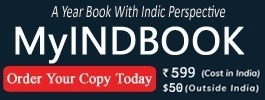Trump 2.0, Iran’s Nuclear Posture, Israeli Strikes, and the Erosion of Diplomacy
- In Military & Strategic Affairs
- 09:12 AM, Aug 03, 2025
- Khushi Mishra & Dr. A. Adityanjee
Introduction
Donald John Trump’s return to the White House for his second term has reignited the Iran nuclear enrichment issue under drastically altered geopolitical conditions. Tehran’s categorical rejection of a new U.S. proposal, combined with Israeli and American strikes on Iranian nuclear facilities in June 2025, signals the collapse of traditional diplomacy and international relations based on a rules-based order. Furthermore, Trump’s imposition of tertiary sanctions on companies belonging to third nations doing business with Iran has muddied the diplomatic waters.
This article examines how Iran's current strategic posture, regional alignments, and external pressures have fundamentally altered the nuclear negotiation landscape. It argues that the crisis is no longer about restoring a nuclear weapons program containment deal but managing escalation and preserving regional stability in a multipolar world.
The Return of Coercive Diplomacy
When Donald Trump assumed office for a second term in January 2025, the White House moved swiftly to restart negotiations with Iran. The administration proposed a framework requiring Tehran to halt uranium enrichment, dismantle advanced centrifuges, and limit its ballistic missile program as demanded by Israel and Benjamin Netanyahu and cease proxy terror activities, in exchange for partial financial sanctions relief. The rhetoric used by the US was belligerent.
On June 4, 2025, Iran’s Supreme Leader for life and dictator Ayatollah Ali Khamenei publicly rejected these new proposals, framing them as a violation of Iran’s national sovereignty. The message was unambiguous: Iran would not renegotiate under the same logic of coercion that characterised Trump’s first term. Trump, in his first term, committed a Himalayan blunder ostensibly on prodding of Benjamin Netanyahu by withdrawing from the JCPOA that had contained Iran’s uranium enrichment program to a considerable degree with success.
For Tehran, uranium enrichment is no longer merely a technical matter; it has become a strategic red line and a symbol of resistance against American hegemony and Israeli containment efforts. As early as 2005, as a state policy, Iran’s supreme leader had issued a fatwa against the development of nuclear weapons, stating that the use of nuclear weapons is a crime against humanity. As Iranian Foreign Minister Abbas Araqchi declared in July 2025, the nuclear program represents a “scientific achievement” and a matter of “national pride.” This transformation marks a departure from the JCPOA-era pragmatism toward a posture of strategic defiance.
Military Escalation: Strikes and Signals
Diplomacy gave way to confrontation in mid-June 2025, when Israel launched “Operation Red Wedding” and “Rising Lion” against Iran’s nuclear and missile infrastructure. The U.S. followed with “Operation Midnight Hammer,” using B-2 bombers to target key facilities, including Fordow and Natanz.
While Fordow sustained serious damage—setting back enrichment capacity by up to two years—U.S. intelligence assessed that other facilities could be restored within months. Iran responded by reiterating its refusal to compromise and warning of “appropriate retaliation.” Meanwhile, an attempted assassination of President Masoud Pezeshkian—widely seen as linked to these events—further escalated tensions. Iran did retaliate, but after forewarning the US about intended attacks on US military bases in the region, allowing for advance evacuation of US military personnel.
Strategic Realignment: Beyond the West
Unlike in 2015, Iran no longer seeks Western approval or economic reintegration. Instead, Tehran has pivoted toward China, Russia, and the BRICS+ bloc, leveraging these partnerships to mitigate financial sanctions and shore up strategic depth. This realignment grants Iran both political cover and economic alternatives. Joint military exercises with Russia, increased energy exports to China, and ongoing diplomatic engagement within BRICS+ have created a parallel order where U.S. and European leverage is weakened. The West and especially the US under Trump 2.0 administration, is solely responsible for its diplomatic isolation owing to the unjust tariff war and bullying tactics that have nothing to do with trade imbalances with various countries.
Breakdown of Verification and Oversight
The collapse of the JCPOA in 2018, triggered by US withdrawal, has also undermined international oversight. Since 2021, the International Atomic Energy Agency (IAEA) has been denied full access to Iranian nuclear sites. Experts warn that blind spots in enrichment monitoring and knowledge losses may now be permanent, complicating any future inspection or verification regime.
The U.S. remains committed to rebuilding a robust verification framework. However, Iran has made it clear that any such measures would require not only technical cooperation but concrete security guarantees and total removal of financial and other sanctions —something Washington is reluctant to provide.
Snapback Threats and Diplomatic Deadlines
In July 2025, the U.S., UK, France, and Germany coordinated a deadline: Iran must return to talks by the end of August or risk the reimposition of UN “snapback” sanctions. Iran has responded with warnings that such a move would trigger regional instability, including renewed attacks on shipping, energy infrastructure, and U.S. assets by aligned militias.
Tehran’s calculation is based on resilience: it believes it can absorb further economic pressure while avoiding direct confrontation. Iran will continue to sell its oil to China, North Korea and other countries, including, more recently Japan. Western powers, in contrast, face the dilemma of how to reimpose pressure without triggering open conflict.
Diverging U.S.–Israel Approaches
While the United States still emphasises diplomacy and containment, Israel advocates continued military pressure, potentially extending to regime destabilisation and regime change. This divergence became publicly visible in early July, with reports of growing tension between Washington and Tel Aviv over long-term objectives.
For Israel, a nuclear-capable Iran is unacceptable, regardless of enrichment thresholds or political cost. For the U.S., the focus remains on delaying breakout capacity and avoiding future regional wars. This strategic divergence may complicate future joint actions or limit U.S. influence over Israeli decision-making.
Conclusion: From Deal-Making to Damage Control
The 2025 nuclear crisis is not merely a sequel to 2018. It reflects a transformation in the geopolitical landscape, the logic of deterrence, and the role of diplomacy itself. The old framework—based on mutual restraint, trust, and international mediation—is no longer operative.
Instead, we have entered a phase of managed escalation, where diplomacy functions less as a means of resolution and more as a tool of narrative management. The path forward will likely include deterrence, selective containment, and new regional security arrangements that reduce the burden on arms control mechanisms alone.
Whether a negotiated solution remains possible will depend less on political will than on structural incentives. As of mid-2025, those incentives appear to be vanishing. Unpredictability of US administration under Trump 2.0 is not conducive to diplomatic settlement of this issue in near future. Iran has openly threatened possibility of withdrawal from the Nuclear Non-proliferation treaty on the pattern of North Korea if its rights to develop nuclear energy program for civilian purposes as enshrined in the NPT for non-nuclear states is not fully guaranteed. By following Netanyahu’s line- lock, stock and Barrel, US under Donal Trump would be hastening that outcome.
Policy Recommendations
- Realistic Negotiation Framework: Both the US and Israel should abandon maximalist demands. The US should not blindly follow Netanyahu’s (Israeli) demands and focus on verifiable caps on Iranian uranium enrichment and missile range limits, not ideological purity.
- Multilateral Pressure, Not Isolation: Engage China and Russia constructively to ensure coordinated pressure on Tehran, instead of allowing alternative blocs to undermine Western unity. That is possible when unilateral secondary and tertiary sanctions are lifted and not misused.
- Separate Nuclear from Regional Geopolitics: Decouple nuclear diplomacy from Iran’s regional posture to reduce deal complexity and increase tractability.
- Separate Nuclear from Ballistic Missiles Development Program: Decouple nuclear diplomacy from the missile capabilities. In order to encourage Iran to adhere to the MTCR guidelines, offer Iran membership of the group while lifting the crippling economic sanctions.
- Invest in Verification Alternatives: Develop satellite and cyber-monitoring tools as partial substitutes for on-site IAEA inspections.
- De-escalation Channels: Rebuild military hotlines and regional risk-reduction platforms to prevent miscalculation or maritime clashes.
References
- Reuters. “Iran's Khamenei Dismisses U.S. Nuclear Proposal.” June 4, 2025.
- Arms Control Association. “The Art of a New Iranian Nuclear Deal.” March 19, 2025.
- Reuters. “US Strikes Destroyed One of Three Iranian Nuclear Sites.” July 17, 2025.
- Radio Free Europe/Radio Liberty. “US–Iran Nuclear Talks Stall.” May 30, 2025.
- The Sun. “Trump’s Enrichment Warning.” July 17, 2025.
- Reuters. “Iranian FM: Enrichment Not Negotiable.” July 21, 2025.
- Reuters. “UN Snapback Looms Amid August Deadline.” July 15, 2025.
- Reuters. “U.S.–Israel Diverge Over Iran Strategy.” July 8, 2025.
- Wikipedia. “Attempted Assassination of Masoud Pezeshkian.” July 2025.
Disclaimer: The opinions expressed within this article are the personal opinions of the author. MyIndMakers is not responsible for the accuracy, completeness, suitability, or validity of any information on this article. All information is provided on an as-is basis. The information, facts or opinions appearing in the article do not reflect the views of MyindMakers and it does not assume any responsibility or liability for the same.







Comments